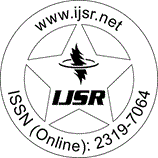Downloads: 138 | Views: 332 | Weekly Hits: ⮙1 | Monthly Hits: ⮙1
Research Paper | Management | Indonesia | Volume 8 Issue 10, October 2019 | Popularity: 6.9 / 10
The Effect of Leadership Style to Motivation and Job Satisfaction
Ni Luh Nyoman Tolinia Sukma Wardhani, I Gede Riana
Abstract: Literally leadership is the nature, capacity, and ability of a person to lead. Understanding the concept of leadership very well helps organizations work more effectively and efficiently in achieving goals according to desired conditions. This study aims to analyze the effect of transformational and transactional leadership on motivation and job satisfaction. Using 85 employee samples, this study used a questionnaire as the main instrument. The collected data is then analyzed using Smart PLS3 to test the hypothesis. The results showed that of the five hypotheses proposed, one hypothesis was rejected. Transformational and transactional leadership has a significant effect on job satisfaction. Transformational leadership has a significant effect on job satisfaction, but transactional leadership has no significant effect on job satisfaction. Furthermore, job satisfaction has a significant effect on job satisfaction.
Keywords: leadership style, motivation, job satisfaction
Edition: Volume 8 Issue 10, October 2019
Pages: 1717 - 1722
Please Disable the Pop-Up Blocker of Web Browser
Verification Code will appear in 2 Seconds ... Wait
